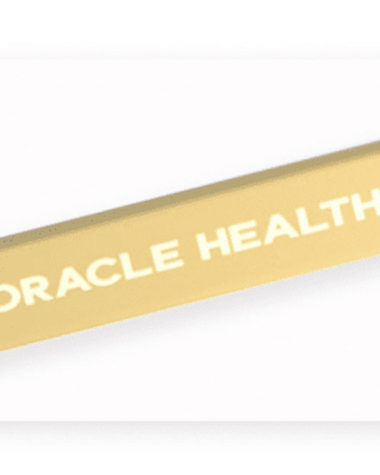Zimmer Biomet Holdings Inc. (NYSE:ZBH) is one of the world’s leading medical technology companies, specializing in the design, manufacture, and marketing of orthopedic reconstructive products, dental implants, sports medicine, trauma devices, and robotic surgical systems. Headquartered in Warsaw, Indiana, Zimmer Biomet traces its roots back to 1927 when the company began as Zimmer Manufacturing Company, focused on producing innovative orthopedic solutions. Over the decades, the company has grown into a global leader with a presence in more than 100 countries, serving hospitals, clinics, and healthcare providers with a comprehensive portfolio of products aimed at improving mobility and enhancing the quality of life for patients worldwide.
The company’s reputation was solidified in 2015 through the merger of Zimmer Holdings, Inc. and Biomet, Inc., creating one of the largest musculoskeletal health companies in the world. This union expanded its product offerings and strengthened its market leadership across orthopedic categories including hips, knees, extremities, spine, and craniomaxillofacial products. With a broad portfolio and scale, Zimmer Biomet gained a stronger foothold in both mature and emerging markets, allowing it to better address the growing healthcare demands of an aging global population.
Zimmer Biomet has consistently focused on innovation, research, and development to maintain its competitive edge. The company has invested heavily in digital technologies and robotic-assisted surgical platforms, such as the ROSA Robotics system, which enhances precision in orthopedic surgeries. By combining advanced data analytics with surgical innovation, Zimmer Biomet continues to evolve into a tech-enabled medtech company, bridging traditional orthopedics with the future of digital health solutions.
Beyond orthopedics, Zimmer Biomet has expanded into complementary segments such as dental and craniomaxillofacial reconstruction, while also pursuing growth through strategic acquisitions. The purchase of Paragon 28 broadened its presence in foot and ankle devices, while the acquisition of Monogram Technologies added a semi-autonomous robotics platform that underscores its commitment to advancing surgical technology. These acquisitions reflect the company’s long-term strategy to diversify and future-proof its portfolio while maintaining leadership in musculoskeletal healthcare.
With more than 18,000 employees worldwide, Zimmer Biomet emphasizes its mission of “alleviating pain and improving the quality of life for people around the world.” Its culture is built on collaboration with healthcare professionals, as the company works closely with surgeons and clinicians to design patient-centric solutions. Coupled with a strong distribution network and a focus on emerging markets, Zimmer Biomet continues to position itself as a critical player in addressing rising healthcare needs driven by an aging population and increasing demand for surgical procedures.
Financially, Zimmer Biomet remains a Fortune 500 company with billions in annual revenue, demonstrating both resilience and adaptability in the face of changing healthcare environments. Its global scale, strong brand recognition, and history of medical innovation make it a cornerstone in the medical devices industry, trusted by patients, doctors, and healthcare systems for nearly a century.
Zimmer Biomet’s Recent Market Performance
Shares of Zimmer Biomet Holdings Inc. rose 3.15% to $107.71 on Friday, participating in a broad market rally as the S&P 500 Index gained 1.52% and the Dow Jones Industrial Average climbed 1.89%. While this upward movement gave short-term relief to investors, it is worth noting that the stock remains 7.71% below its 52-week high of $116.71, reached in September of last year. The price recovery, though positive, highlights lingering concerns about the company’s ability to sustain momentum amid operational and financial pressures.
Compared to peers, Zimmer Biomet appeared stronger on the day, outperforming Johnson & Johnson, which gained only 0.20%, Medtronic with a 1.77% climb, and Stryker with a 2.44% increase. However, this relative outperformance does not mask the deeper structural and valuation risks facing the company. Trading volume also tells another story—while the price advanced, only 1.1 million shares changed hands, which was well below its 50-day average of 1.9 million. This light volume suggests that institutional conviction behind the rally remains weak, raising questions about sustainability.
Repeated Forecast Cuts Highlight Margin Pressures
Zimmer Biomet’s track record in 2025 has been defined by repeated downward revisions of profit guidance. The company initially lowered its full-year forecast in February, citing currency headwinds and acquisition-related costs, with guidance of $8.15–$8.35 per share, well below Wall Street expectations of $8.56. By May, management cut its outlook again, this time down to $7.90–$8.10, citing additional pressures from the Paragon 28 acquisition, tariff uncertainty, and foreign exchange volatility.
For investors, these repeated reductions create a cloud of uncertainty around earnings visibility. Instead of instilling confidence, the pattern suggests that management may be struggling to fully account for cost headwinds, synergies, and external risks, which undermines credibility.

CHECK THIS OUT: Exact Sciences (EXAS) Just Made Cancer Detection 100x Easier! and Soleno Therapeutics (SLNO): The Biotech Company That Could Make You Rich.
ERP System Disruptions Reveal Execution Risks
In addition to financial headwinds, Zimmer Biomet continues to deal with operational challenges. Its transition to a new SAP ERP system created significant disruptions in 2024, impacting production, shipping, and supply chain efficiency. These issues particularly hurt its sports, extremities, and trauma segments. The market punished the stock with a sharp 9% drop when the disruptions came to light, demonstrating how sensitive investors are to execution failures in a highly competitive industry.
Although management is working to resolve these issues, the long-term risk is that future IT transitions or integration of acquisitions could lead to more disruptions. For a company dependent on timely delivery of medical devices for hospitals and clinics worldwide, execution risk remains a key overhang.
Technical Weakness and Valuation Concerns
Even with Friday’s 3.15% gain, technical signals suggest caution. Indicators like the Relative Strength Index (RSI) and Williams %R are showing overbought conditions, while candlestick patterns reveal long upper shadows that imply selling pressure. Independent analyses rate Zimmer Biomet’s technical outlook poorly, with scores as low as 2.2 out of 10.
Valuation is another sticking point. With enterprise value-to-EBIT multiples approaching 79 and price-to-sales metrics above peer averages, the stock looks expensive relative to fundamentals. In a sector where margin pressure and competitive dynamics are intensifying, paying a premium valuation increases downside risk if revenue growth slows or if cost savings from acquisitions take longer than expected to materialize.
Profitability Strains Limit Upside
Despite posting consistent revenue growth, Zimmer Biomet’s profitability metrics reveal areas of weakness. Net income-to-revenue ratios have dipped into negative territory at points, and return on equity and return on assets remain modest compared to sector leaders. These figures underscore how rising costs, tariff exposure, and acquisition integration expenses are eroding margins. Even with management highlighting gross margins around 71%, the gap between top-line growth and bottom-line delivery is a concern for investors looking for efficiency gains.
Competitive Challenges in Robotics and Orthopedics
Zimmer Biomet is attempting to strengthen its market positioning through acquisitions such as Paragon 28 and Monogram Technologies, but competitive risks remain. In robotics, it faces formidable players like Stryker and Medtronic, both of which are aggressively expanding their robotic-assisted surgery portfolios. While Zimmer has made progress, the long lead times for regulatory approvals and hospital adoption mean that these investments may not pay off until the late 2020s.
Meanwhile, its core orthopedic business—hips and knees—is under constant pricing pressure and faces limited growth opportunities in mature markets. Competitors with stronger execution and broader product ecosystems may continue to capture share at Zimmer’s expense.
Weak Trading Conviction and Analyst Skepticism
Zimmer Biomet’s low trading volume on Friday’s rally further highlights the skepticism among institutional investors. Despite a price rise, conviction was not strong enough to push volumes toward average levels, a sign that professional investors may remain cautious.
Analyst sentiment reflects this hesitation. While some price targets suggest upside, the average consensus has slipped to around $107.40, down from $124.30 earlier in the year. The wide target range of $95 to $125 illustrates uncertainty, with some analysts cutting forecasts due to rising costs and competitive pressures.
Final Outlook: A Fragile Rally
Zimmer Biomet’s 3.15% gain on Friday should not be mistaken for a turnaround. The company remains weighed down by repeated guidance cuts, execution issues with ERP systems, elevated valuation multiples, weak profitability, and fierce competition in surgical robotics and orthopedics. Low trading conviction and cautious analyst sentiment reinforce the view that the stock may struggle to sustain upward momentum.
While Zimmer Biomet continues to invest in acquisitions and innovation, the near-term risks appear greater than the rewards. For bearish investors, the stock’s fragile rally may present more of a selling opportunity than a sustainable bullish trend.
READ ALSO: Johnson & Johnson (JNJ) can be the Next Trillion-Dollar Stock and Boston Scientific (BSX) Just Signed a $45M Deal—Here’s What It Means for Investors.








